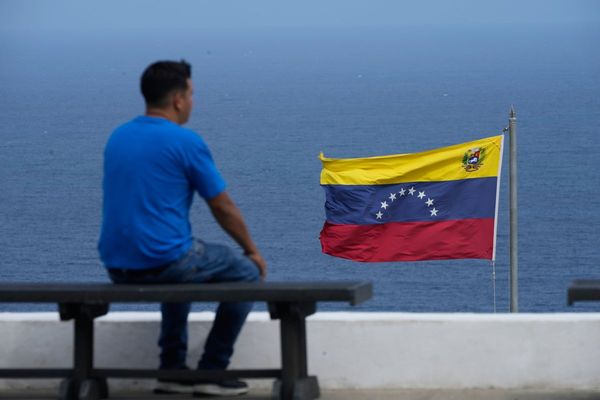In less than a decade, Korean TV dramas (K-dramas) have transmuted from a regional industry to a global phenomenon – partly a consequence of the rise of streaming giants.
But foreign audiences may not realise the K-dramas they’ve seen on Netflix don’t accurately represent the broader Korean TV landscape, which is much wider and richer than these select offerings.
At the same time, there are many challenges in bringing this wide array of content to the rest of the world.
The rise of hallyu
Korean media was transformed during the 1990s. The end of military dictatorship led to the gradual relaxation of censorship.
Satellite media also allowed the export of K-dramas and films to the rest of East Asia, and parts of Southeast Asia. Some of the first K-dramas to become popular overseas included What Is Love (1991–92) and Star in My Heart (1997). They initiated what would later become known as the Korean wave, or hallyu.
The hallyu expansion continued with Winter Sonata (2003), which attracted viewers in Japan, Malaysia and Indonesia. Dae Jang Geum/Jewel in the Palace (2005) resonated strongly in Chinese-speaking regions, and was ultimately exported to more than 80 countries.
A breakthrough occurred in 2016. Netflix entered South Korea and began investing in Korean productions, beginning with Kingdom (2019–21) and Love Alarm (2019–21).
In 2021, the global hit Squid Game was released simultaneously in 190 countries.
But Netflix only scratches the surface
Last year, only 20% of new K-drama releases were available on Western streaming platforms. This means global discussions about K-dramas are based on a limited subgroup of content promoted to viewers outside South Korea.
Moreover, foreign viewers will generally evaluate this content based on Western conceptions of culture and narrative. They may, for instance, have Western preferences for genre and themes, or may disregard locally-specific contexts.
This is partly why Korean and foreign audiences can end up with very different ideas of what “Korean” television is.
Genres
When a K-drama is classified as a sageuk (historical drama) but also incorporates elements of fantasy, mythology, romance, melodrama, crime fiction and/or comedy, foreign audiences may dismiss it as “genre-confused”. Or, they may praise it for its “genre-blending”.
But the drama may not have been created with much attention to genre at all. The highly inventive world-building of pre-Netflix dramas such as Arang and the Magistrate (2012) and Guardian: The Lonely and Great God (2016) prominently feature all the aforementioned genres.
While foreign viewers may think visual media begins with readily identifiable genres, many K-dramas aren’t produced on this premise.
Themes
Western viewers (and other viewers watching through a Western lens) might assume “liberal” themes such as systemic injustice, women’s rights and collusion in politics entered K-dramas as a result of Western influence. But this is a misconception.
The emergence of such themes can be attributed to various changes in Korean society, including the easing of censorship, rapid modernisation, and the imposition of neoliberal economics by the International Monetary Fund in 1997.
Although gender disparities still exist in South Korea, economic uncertainty and modernisation have prompted a deconstruction of patriarchal value systems. Female-centred K-dramas have been around since at least the mid-2000s, with women’s independence as a recurring theme in more recent dramas.
Local contexts
A major barrier to exporting K-dramas is the cultural specificity of certain elements, such as Confucian values, hierarchical family dynamics, gender codes, and Korean speech codes.
The global success of a K-drama comes down to how well its culturally-specific elements can be adapted for different contexts and audiences.
In some cases, these elements may be minimised, or entirely missed, by foreign viewers.
For example, in Squid Game, the words spoken by the killer doll in the first game are subtitled as “green light, red light”. What the doll actually says is “mugunghwa-kkochi pieot-seumnida”, which is also what the game is called in Korean.
This translates to “the mugunghwa (Rose of Saron) has bloomed”, with mugunghwa being South Korea’s national flower.
These words, in this context, are meant to ironically redefine South Korea as a site of hopelessness and death. But the subtitles erase this double meaning.
It’s also difficult for subtitles to reflect nuanced Korean honorific systems of address. As such, foreign viewers remain largely oblivious to the subtle power dynamics at play between characters.
All of this leads to a kind of cultural “flattening”, shifting foreign viewers’ focus to so-called universal themes.
A case study for global success
Nevertheless, foreign viewers can still engage with many culturally-specific elements in K-dramas, which can also serve as cultural literacy.
The hugely successful series Extraordinary Attorney Woo (2022) explores the personal and professional challenges faced by an autistic lawyer.
Director Yoo In-sik described the series as distinctly Korean in both its humour and the legal system it portrays, and said he didn’t anticipate its widespread popularity.
Following success in South Korea, the series was acquired by Netflix and quickly entered the top 10 most popular non-English language shows.
The global appeal can be attributed to its sensitive portrayal of the protagonist, the problem-solving theme across episodes, and what Yoo describes as a kind and considerate tone. Viewers who resonate with these qualities may not even need to engage with the Korean elements.
Many K-dramas that achieve global success also feature elements typically considered “Western”, such as zombies.
While the overall number of zombie-themed productions is low, series and films such as Kingdom (2019–21), All of Us Are Dead (2022), Alive (2020) and Train to Busan (2016) have helped put Korean content on the map.
One potential effect of the zombie popularity may be the displacement of Korean mythological characters, such as fox spirits, or gumiho, which have traditionally held significant narrative space.

Local production under threat
The influence of streaming giants such as Netflix is impacting South Korea’s local production systems.
One consequence has been a substantial increase in production costs, which local companies can’t compete with.
The early vision of low-cost, high-return projects such as Squid Game is rapidly diminishing.
Meanwhile, Netflix is exploring other locations, such as Japan, where dramas can be produced for about half the price of those in Korea. If this continues, the rise of Korean content may slow down.
Sung-Ae Lee does not work for, consult, own shares in or receive funding from any company or organisation that would benefit from this article, and has disclosed no relevant affiliations beyond their academic appointment.
This article was originally published on The Conversation. Read the original article.







